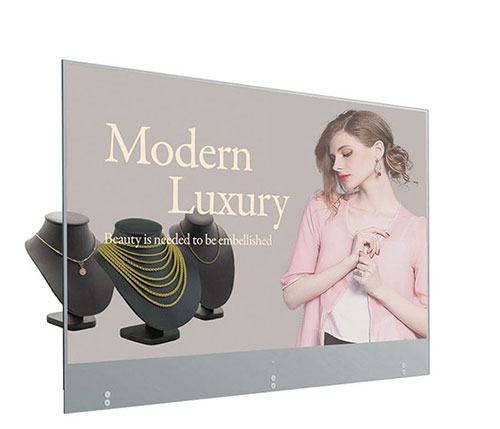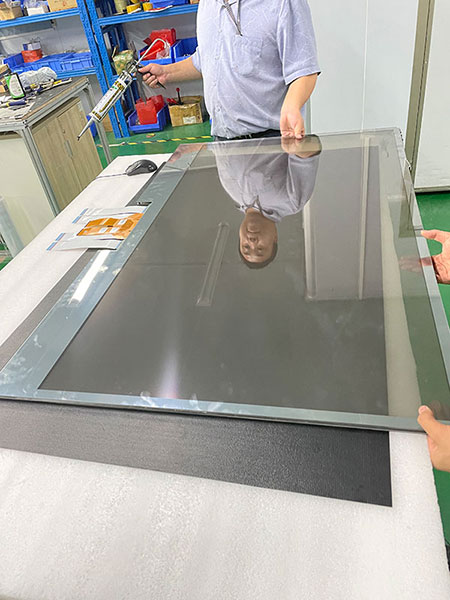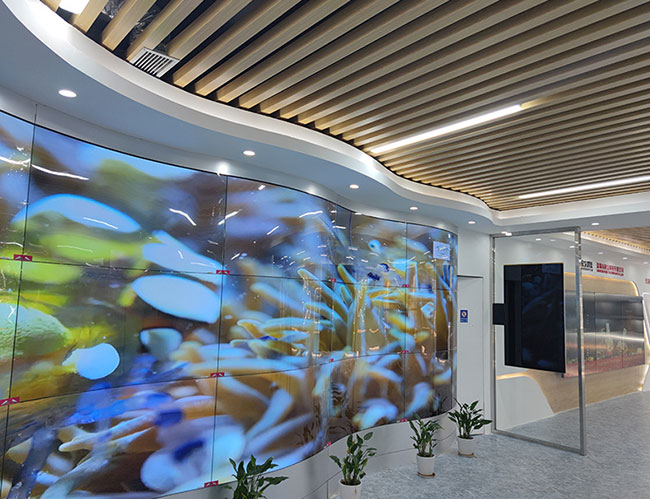Written By Rich Jiang On 8th December 2022
Improving Picture Quality
In this section, we will talk about the key qualities and benefits of OLED screens to provide you with the information you need to make an informed decision when choosing a new screen for your device. OLED TVs are known for their striking quality picture, especially for HDR content. This is because OLED TVs are capable of producing a wider range of colors than a typical TV using an LCD panel. Since OLED panels don’t use a backlight, they also produce a sharper picture with deeper contrast, resulting in a more realistic image. It also has the ability to produce vivid and lifelike images, making it a great choice for movies and shows. For gaming, OLED TVs also have the clear advantage over LCD TVs. The contrast ratio is much higher than an LCD TV. This makes it easier to spot details and spot enemy players in darker areas of the screen. An OLED TV can also produce true blacks, which means it will not suffer from poor viewing angles if you have your screen facing the wrong way.
Longer Lifespan
OLED screens can be expected to last longer than an LCD TV. You may have read that before, but what does that mean exactly? With an LCD TV, the lifespan will depend on the model you choose. Some have a lifespan of 6-10 years, while others will last for around 3-4 years. OLED TVs, on the other hand, are expected to last for at least 10 years. This is because OLED panels are resistant to damage from electrostatic discharge (ESD). This means that the longer you use your OLED TV, the longer it will last. This is an especially important feature to consider as most people don’t know how long their TVs will last. If you have an old TV sitting in storage, it will eventually degrade over time. This is likely to cause visual errors that may not be visible until a later date. By buying an OLED TV, you can ensure that you get the most out of the lifespan of your TV.

High Contrast Ratio
Contrast ratio is the difference between the brightness of your image and the brightness of the black parts of your image. Lower contrast ratio TVs are less able to highlight certain areas of an image, especially lighter colors. This can result in the image looking blurred and unnatural. High contrast ratio OLED TVs have a contrast ratio of between 1000 and 2000. This means that the contrast ratio will be much higher than an LCD TV. With high contrast ratio, you will be able to see the differences between light and dark parts of the image much more clearly. This makes it easier to spot enemies in the dark while playing games, as well as being able to spot details in images and videos.
Better Color Accuracy
With an LCD TV, color accuracy can vary depending on the model and the manufacturing process. Most LCD TVs have a color gamut that’s found in the sRGB color space. This is the standard used in digital cameras and computer monitors. If you’re looking to take your photography or video-editing skills to the next level, you’ll want to get a TV with a wider color gamut. The majority of TVs, however, have a much narrower color gamut. When you watch movies and shows on an LCD TV, you might notice that the colors are dull and washed out. This is because the color gamut is too small to show a wide range of colors. With an OLED TV, the color gamut will be found in the Adobe RGB color space. This is one of the largest color spaces that’s used in professional photography and television production. For image and video editing, you’ll find that the color accuracy is much closer to the original. This means that you don’t have to worry about ruining your video project if you choose an LCD TV.

Better Viewing Angle
The viewing angle of an LCD TV is the distance between you and the screen. You can expect the viewing angle to vary depending on the model you choose. While most LCD TVs have a viewing angle of 170-180 degrees, some have a wider viewing angle of up tp 300 degrees. With an OLED TV, the viewing angle is much wider at 360-degrees. This means that the picture will look great even if you’re watching the TV from above or below the screen. This is ideal if you like to position the TV in a corner or next to a wall. Some LED TVs also support HDR and Dolby Vision. This means that you’ll be able to enjoy an even wider range of colors and contrast ratio.
Ease of Use and Maintenance
OLED TVs are designed to be easier to use and maintain than an LCD TV. This is because there are no backlights or blue phosphor dimming pixels. This means that there’s no risk of burn-in or images coming off if you leave the TV on. LCD TVs are also not as easy to maintain. To remove the screen protector on many LCD TVs, you’ll need to use a screen cleaning wipe. This can be difficult for people with limited access to a clean surface. With an OLED TV, you won’t need to worry about keeping the screen clean. The screen surface is made from glass, so it’s easy to clean. The brightness, contrast, and color of the screen can also be controlled. This is useful if you don’t want the screen to be too bright or dark.

Cost Effective Option
OLED TVs are more expensive than an LCD TV. This may be surprising for some people, as OLED TVs are often considered to be a luxury option. With an OLED TV, however, you won’t need to change your TV every few years. OLED TVs are expected to have a lifespan of at least 10 years, meaning you won’t have to replace your TV as often. LCD TVs, on the other hand, have a lifespan of 6-10 years. This means that you’ll need to replace your TV within a few years. This is an expensive upgrade. You can also expect to pay around $550-$650 for an entry-level 4K TV. You can expect to spend around $800-$1000 for a premium OLED TV. These prices exclude any extras that you may want, such as a soundbar or gaming controller.
 Rich Jiang
Rich Jiang
Rich Jiang is the Marketing Director at CY Digital Signage. And he has over 15 years experiences in digital signage displays.
